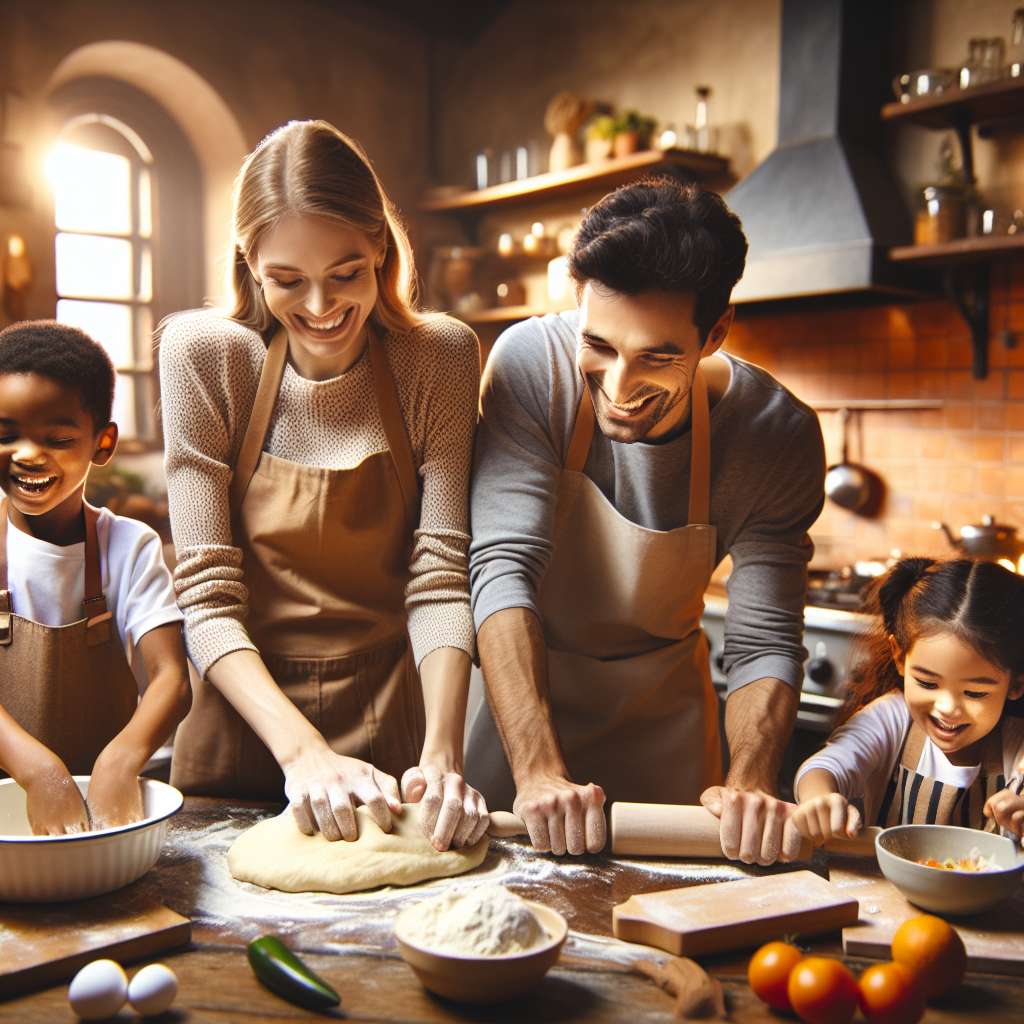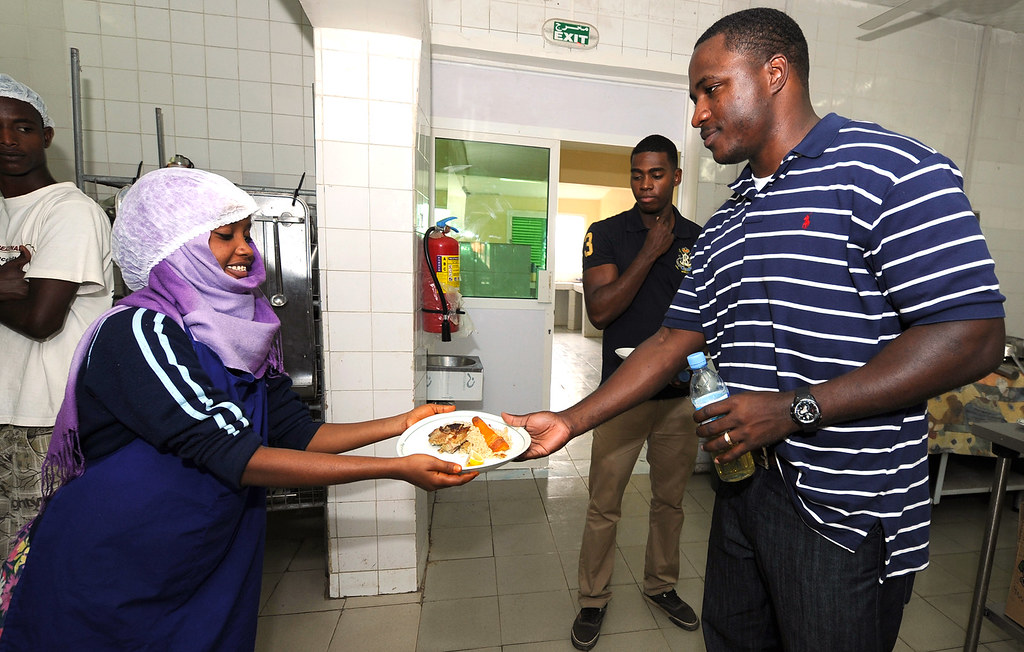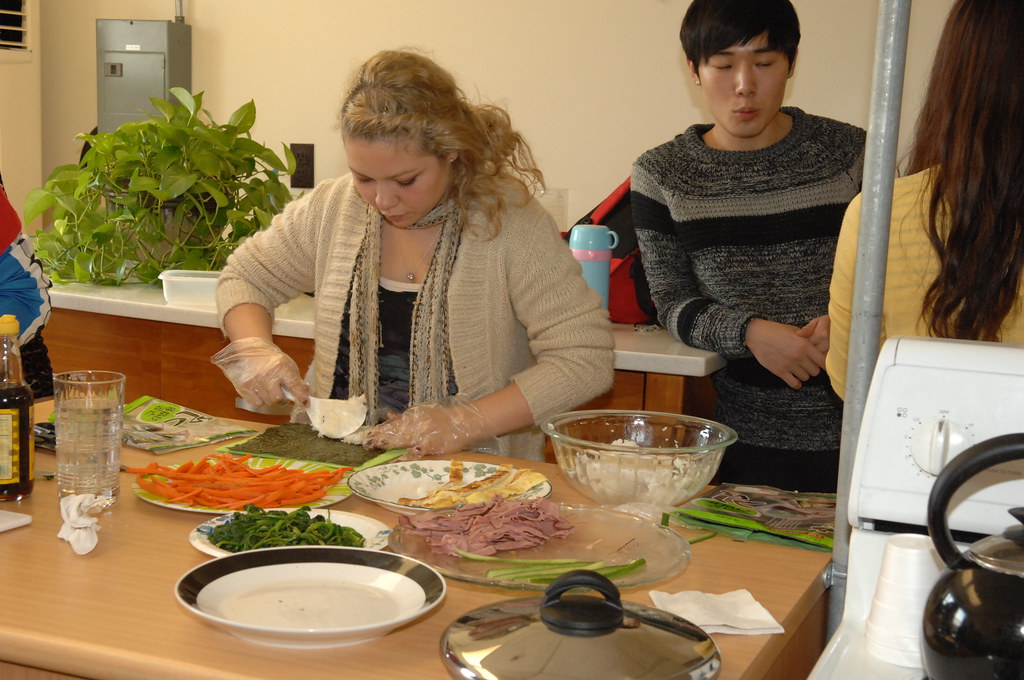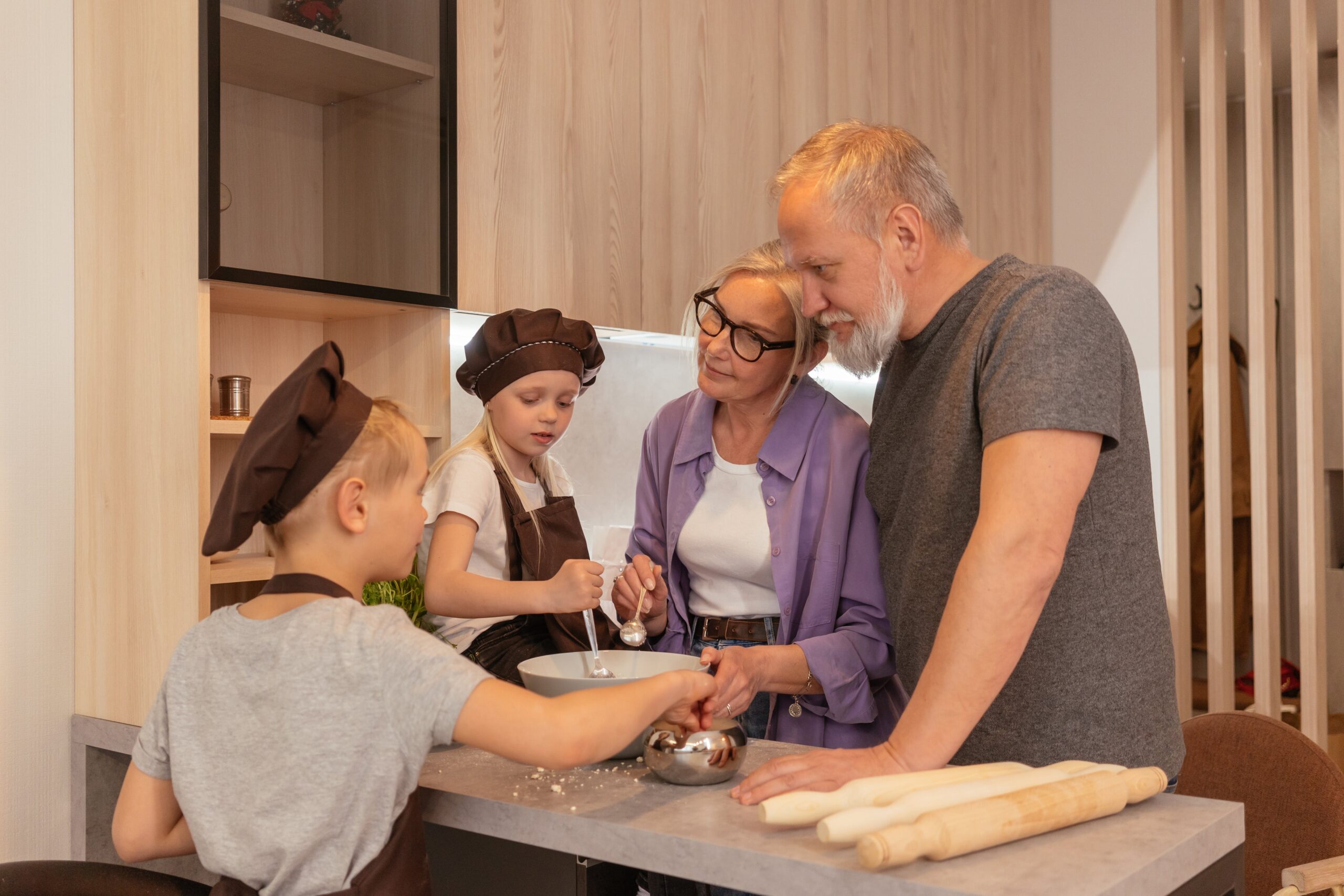
Article-at-a-Glance
-
Discover how culinary classes can strengthen family bonds and create lasting memories.
-
Learn to select the ideal cooking experience that caters to all ages within your family.
-
Uncover the benefits of cooking with locally sourced ingredients and traditional methods.
-
Gain insight into how cooking serves as an educational and fun activity for children.
-
Find out how culinary classes during vacation can enhance your travel experience.
Discover the Joys of Multigenerational Culinary Classes on Vacation
Imagine a kitchen filled with laughter, the rich aromas of cooking food, and the joyous clamor of family members of all ages learning together. This is the heartwarming scene at multigenerational family culinary classes, a vacation activity that’s quickly becoming a favorite among travelers. It’s more than just preparing meals—it’s about weaving a tapestry of shared experiences and learning that enriches family ties and expands cultural horizons.
The Perfect Recipe for Family Bonding
There’s something magical about cooking together that brings people closer. Whether it’s kneading dough or stirring a simmering pot, these shared tasks allow for natural conversation and collaboration. Most importantly, when families cook together, they create not just meals, but memories that last a lifetime.
Embark on a Tasty Adventure Together

Family culinary classes offer a unique opportunity to explore new flavors and cuisines in a hands-on setting. They’re a space where grandparents can pass down heirloom recipes, parents can share the nuances of a well-loved dish, and kids can discover the excitement of creating something delicious from scratch.
Setting the Table for Success
Before embarking on this delectable journey, it’s crucial to set yourselves up for success. That means choosing the right class that suits your family’s needs, interests, and skill levels. Look for classes that promise an engaging, age-appropriate experience for everyone, from the littlest sous-chef to the most seasoned home cook.
-
Consider the class size and instructor-to-student ratio to ensure personalized attention.
-
Check if the culinary class includes activities and tasks suitable for all age groups.
-
Ensure the menu is appealing and adaptable to any dietary restrictions within your family.
Choosing the Right Culinary Class for Your Family
When selecting a culinary class, think about what kind of experience you want to have. Are you looking for a relaxed atmosphere where you can all enjoy the process of cooking? Or do you prefer a more structured class where you can learn specific techniques and dishes? Consider the location too—opting for a class in a picturesque setting can add an extra layer of enjoyment to your culinary adventure.
Preparing Young Chefs: Engaging Kids in the Kitchen
Getting kids excited about cooking is easier than you might think. The key is to involve them in every step of the process. Let them pick out fresh ingredients at the market, measure spices, or even stir the pot (with supervision, of course). This hands-on involvement nurtures their interest in food and cooking, and helps them appreciate the effort that goes into meal preparation.
“A pinch of patience, a dash of kindness, a spoonful of laughter, and a heap of love.” – Anonymous
This quote captures the essence of what cooking with family is all about. It’s not just about the food—it’s about the shared experience and the love that’s stirred into every dish.
The Art of Cooking Across Generations

“In the kitchen, as in life, the best memories are made when gathered around the table.”
Cooking is an art that transcends generations. It’s a thread that connects the past to the present and future. Multigenerational cooking classes offer a unique canvas where each family member can contribute their own brushstroke, whether it’s a tried-and-true technique or a fresh new flavor.
In these classes, the wisdom of the elders pairs with the curiosity of the young, creating a perfect blend of tradition and innovation. The elders often hold secrets of the trade that they’ve honed over many years—secrets that they’re eager to share with younger generations. Meanwhile, the younger ones bring a sense of wonder and a willingness to experiment that can lead to delightful culinary discoveries.
It’s not just about following recipes—it’s about storytelling. As hands work together to mix and mold, stories of the old family kitchen, the origin of recipes, and the history behind each dish come to life. This is where the real magic happens.
Creating Timeless Memories Through Recipes
Recipes are more than just instructions on a page; they’re stories, they’re history, they’re love passed down through generations. In a multigenerational cooking class, a simple recipe card can serve as a time machine, taking you back to your roots and allowing you to bring a piece of heritage to the present day.
Technique and Tradition: Learning from the Masters
While cooking, grandparents and parents become the masters, guiding younger family members through each step with patience and care. These classes provide an informal setting where skills are passed down naturally and organically, as they have been for centuries.
And let’s not forget the value of technique. Proper knife skills, understanding the right way to knead dough, or mastering the flip of a pancake are all valuable skills that can only be honed through practice and guidance. These are the moments where confidence is built in the kitchen.
A Dash of Education, A Pinch of Excitement
Education in the kitchen goes beyond recipes and techniques. It’s about understanding where our food comes from, the importance of fresh ingredients, and the cultural stories behind each dish. This type of learning is dynamic and engaging, making it a perfect fit for curious minds of all ages.
Excitement in the kitchen comes from the little victories: a successful flip of an omelette, the perfect rise of a loaf of bread, or the balance of flavors in a homemade sauce. These moments of triumph are what make culinary classes so memorable and why they can ignite a passion for cooking in participants, young and old.
Cooking as a Learning Experience for Kids
For kids, cooking is a fantastic way to learn life skills such as following directions, measuring, and understanding time management. But it’s not just about practical skills—it’s also about creativity. Encouraging kids to experiment with flavors and ingredients fosters their creative thinking and problem-solving abilities.
Savoring the Experience: Making Every Moment Count
The process of cooking is just as important as the final product. Savoring the experience means taking the time to appreciate the textures, the aromas, and the flavors that develop with each step. It means being present in the moment and enjoying the company of loved ones.
And let’s not forget the importance of tasting as you go! It’s a fun way to engage all the senses and teaches kids (and adults) to be mindful of the changes in flavor as a dish progresses.
Nurturing Future Foodies
Today’s curious child in the kitchen could be tomorrow’s celebrated chef or a passionate food blogger. The seeds we plant in these culinary classes can grow into a lifelong love affair with food and cooking.
Instilling a Love for Cooking in Young Minds
Love for cooking starts with fun and engagement. When kids feel involved and valued in the cooking process, they’re more likely to develop an interest in food and meal preparation. Positive reinforcement and celebrating their culinary creations, no matter how small, go a long way in nurturing this love.
Passing the Baton: Teaching Kids About Family Recipes
Family recipes are like heirlooms, treasures filled with flavors and memories. When you teach a child to make a family recipe, you’re not just passing on a set of instructions; you’re entrusting them with a piece of your history. This act of sharing is powerful and can instill a sense of pride and responsibility in young cooks.
Cook, Eat, and Share: The Ultimate Culinary Cycle

“Family Preparing Food in the Kitchen …” from www.pexels.com and used with no modifications.
The cycle of cooking doesn’t end when the dish is ready. The true joy comes when you sit down together to eat and share the fruits of your labor. This is the time to reflect on what you’ve learned, to laugh over the mishaps, and to plan your next culinary adventure.
Sharing extends beyond the table, too. When kids share the dishes they’ve helped create with friends and extended family, they’re sharing a piece of themselves. It’s a form of self-expression and connection that’s deeply rooted in the human experience.
Feast Together: Enjoying the Fruits of Your Labor
After the chopping, stirring, and sautéing, comes the best part of the culinary adventure—feasting together. It’s a moment of collective pride as you all sit down to savor the dishes you’ve created. It’s a time for laughter and storytelling, where each bite is a testament to the effort and love put into the cooking process. These shared meals are not just nourishing for the body, but for the soul, as they become part of the family’s treasure trove of memories.
Recipe Exchange: Sharing Stories and Dishes
At the end of the class, exchanging recipes with fellow family members or even with the instructors can be a lovely way to continue the culinary journey. It’s not just about collecting a list of ingredients and steps; it’s about sharing the story behind each dish. When you recreate these recipes at home, they serve as delicious mementos of your trip, allowing you to relive the experience and share it with others.
Frequently Asked Questions

“Culinary exchange, Arta, Djibouti …” from www.flickr.com and used with no modifications.
How Do I Find Family-Friendly Cooking Classes Abroad?

“College Pastry Arts Grand Buffet …” from www.flickr.com and used with no modifications.
Finding family-friendly cooking classes abroad can be as simple as a quick internet search or a chat with your travel agent. Look for reviews and testimonials from other families to gauge the experience. Additionally, many vacation resorts and local culinary schools advertise family-oriented classes that focus on their regional cuisine, so check their offerings when planning your trip.
Can Cooking Classes Cater to Dietary Restrictions?
Most cooking classes are well-equipped to cater to various dietary restrictions. When booking a class, communicate any dietary needs your family may have. Instructors are often willing to accommodate and can suggest alternative ingredients to ensure everyone has a safe and enjoyable cooking experience.
What Age Is Appropriate for Kids to Join Cooking Classes?

“ACS “Fun & Easy Korean Cooking Class …” from www.flickr.com and used with no modifications.

“An Elderly Couple Preparing in the …” from www.pexels.com and used with no modifications.
Kids as young as three can participate in cooking classes, especially those tailored for families. These classes often include simple, fun activities that engage young children while teaching them basic culinary skills. However, the appropriate age can vary depending on the complexity of the class, so it’s best to inquire with the class provider beforehand.
“A family that cooks together, stays together. Through the shared love of food and cooking, every family member can contribute, learn, and grow, strengthening bonds and making every meal a celebration of togetherness.”
Are There Culinary Classes That Focus on Sustainability?
Yes, there are culinary classes that emphasize sustainability. These classes teach participants how to cook using locally sourced, seasonal ingredients and often include lessons on reducing food waste and supporting local agriculture. They’re a fantastic way to learn about responsible consumption while enjoying delicious food.



